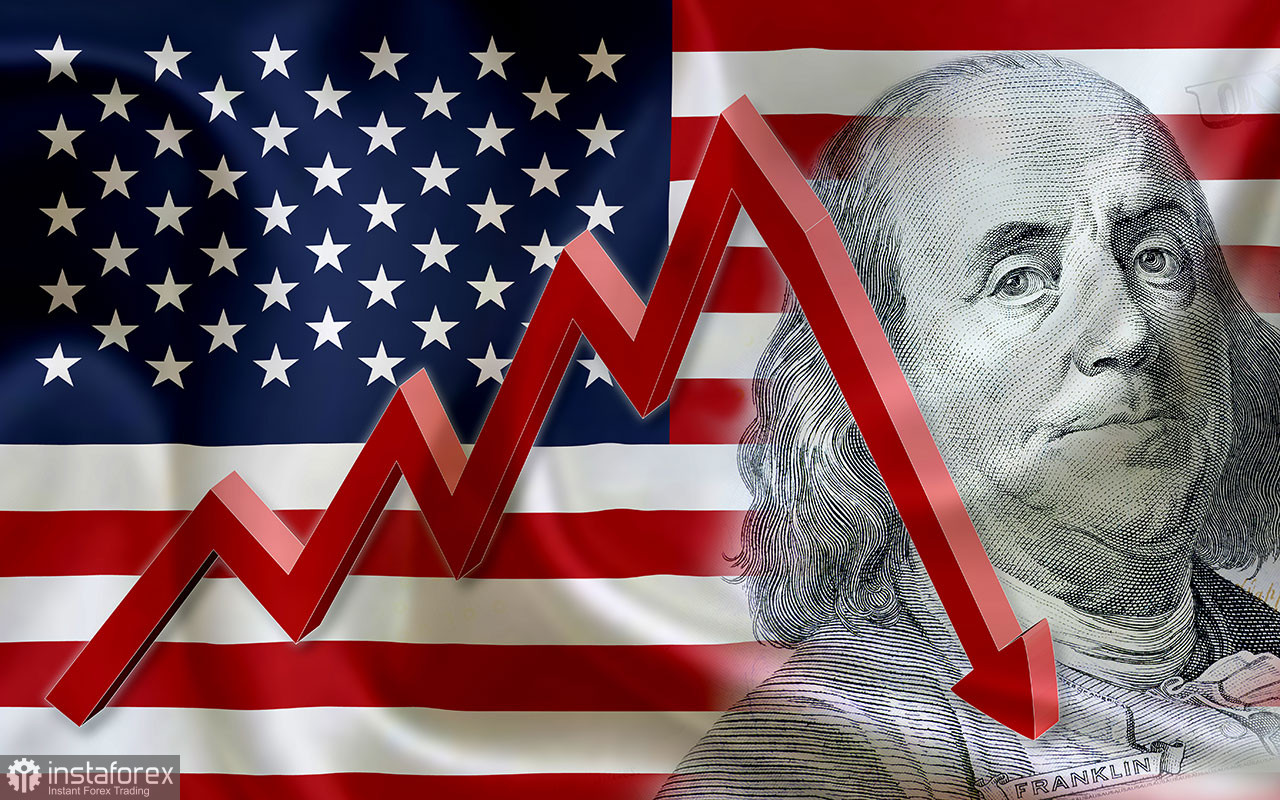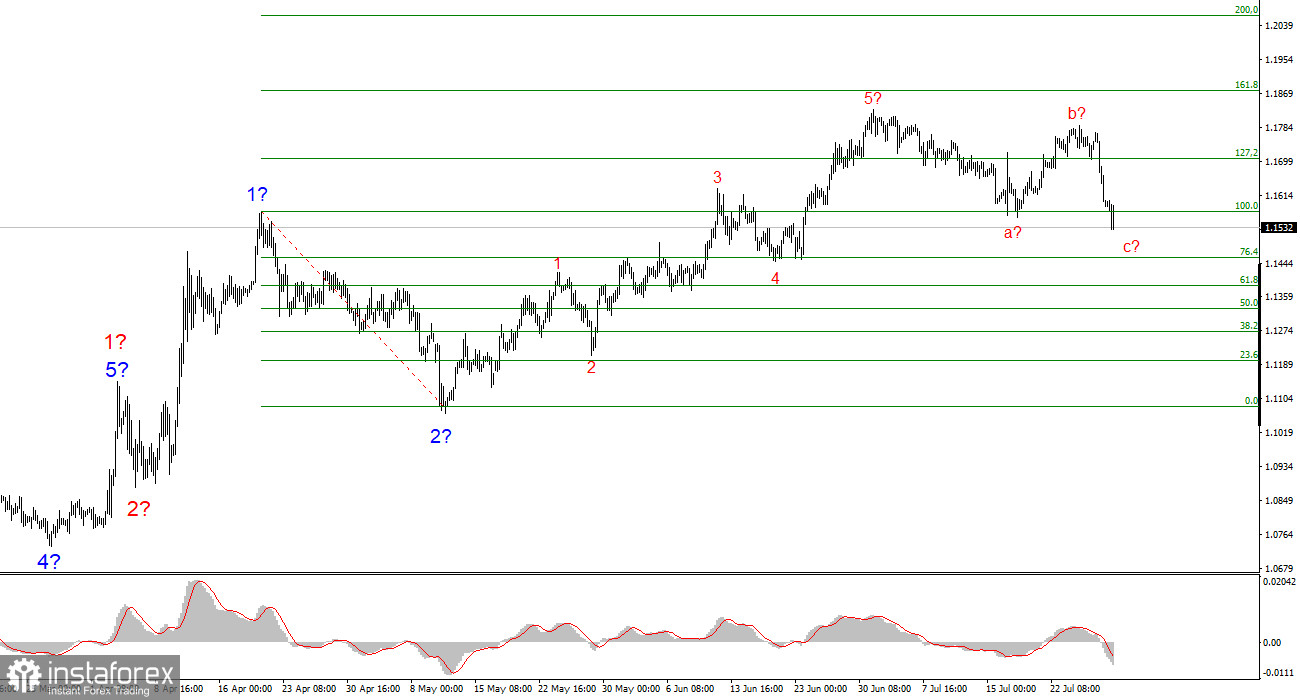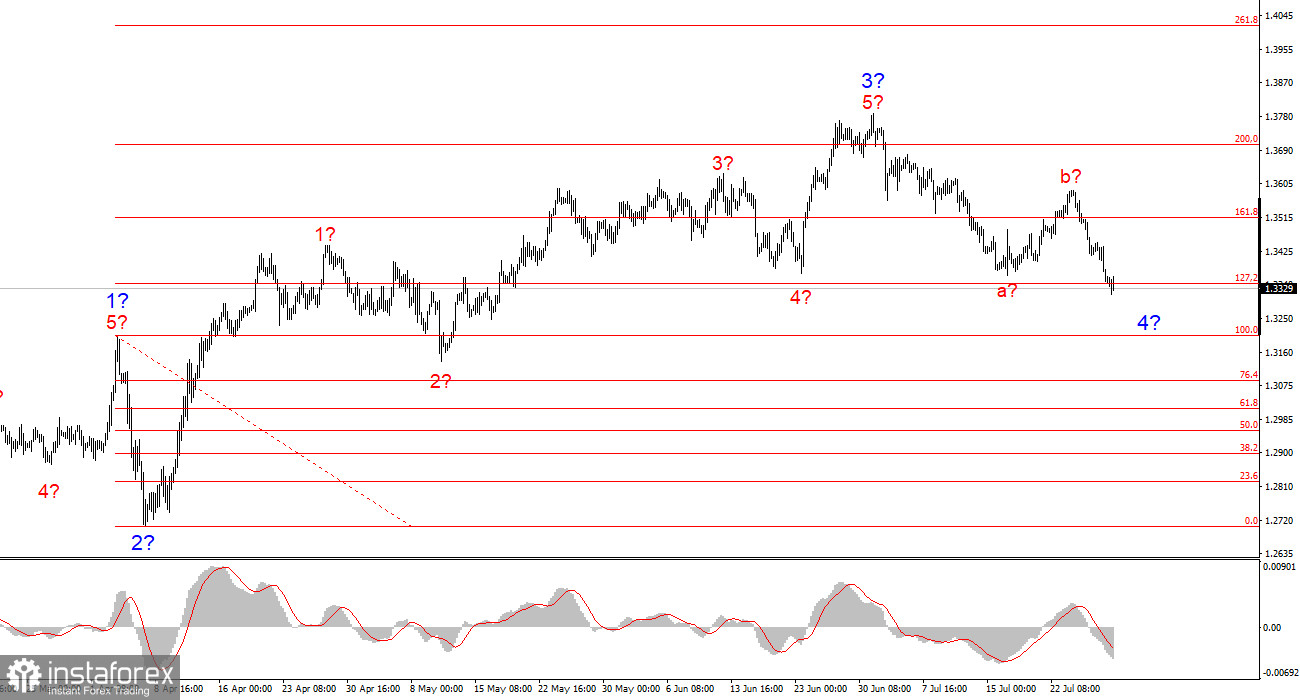
There will likely be some dovish hints, but they will probably not differ from previous statements and rhetoric by Federal Reserve officials. This is the general expectation one day before the conclusion of the Fed's fifth meeting of 2025. It's worth noting that two FOMC members already support easing monetary policy. However, at least one of them—Christopher Waller—is a potential candidate to become the next President of the FOMC after Jerome Powell steps down. And Donald Trump, who will be appointing the new chair, is demanding that the Fed immediately and significantly cut interest rates. Essentially, the main requirement for the next candidate is a willingness to lower rates as much as Trump wants. So, I'm personally not surprised by Waller's dovish stance.
Most FOMC members hold centrist views. They acknowledge that two rounds of easing may occur in 2025, but stress that there must be solid grounds for such action—for example, a cooling labor market or a sharp slowdown in the U.S. economy. At the same time, for most Fed officials, inflation remains the key indicator, and in recent months, it has shown an upward trend. Therefore, unless the labor market or economy starts deteriorating rapidly, the Fed will continue to base its decisions on inflation, just as it has in the past.
Based on this, a rate cut in July is unlikely. In September, the Fed's decision will depend on the next two inflation reports. If the Consumer Price Index continues to rise in July and August (which is the most likely scenario), then on September 17, the Fed will very likely decide to maintain its current wait-and-see approach.

Futures market expectations, as reflected in the CME FedWatch tool, are interesting data—but recently, they have not reflected reality. Recall that in 2024, market participants were expecting seven rounds of easing, and in early 2025, four. None of these forecasts came true. If inflation continues to rise and Powell remains the FOMC chair, there is no reason to expect the resumption of the easing cycle in September. This is likely positive for the dollar, but the wave structure still doesn't favor the U.S. currency—nor does Donald Trump's policy.
Wave Outlook for EUR/USD:
Based on the analysis of EUR/USD, I conclude that the pair is continuing to build a bullish trend segment. The wave structure still entirely depends on the news background, particularly Trump's decisions and U.S. foreign policy. The targets of this trend segment may extend as far as the 1.25 area. Accordingly, I continue to consider buying positions with targets around 1.1875, which corresponds to the 161.8% Fibonacci level, and beyond. The formation of wave 4 may conclude in the coming days, so this week is a good time to look for new buying opportunities and closely monitor the news.
Wave Outlook for GBP/USD:
The wave structure for GBP/USD remains unchanged. We are dealing with a bullish, impulsive segment of the trend. Under Trump, the markets may face a large number of shocks and reversals that could significantly affect the wave picture. But at present, the working scenario remains intact. The targets of the bullish segment are now around the 1.4017 level. Currently, a corrective set of waves within wave 4 is unfolding. According to classic theory, it should consist of three waves, and we are now seeing the development of wave C.
My Key Principles for Analysis:
- Wave structures should be simple and clear. Complex patterns are hard to trade and often subject to revision.
- If you're unsure about market conditions, it's better to stay out.
- One can never be 100% certain about the direction of movement. Always use protective Stop Loss orders.
- Wave analysis can be combined with other forms of analysis and trading strategies.






















